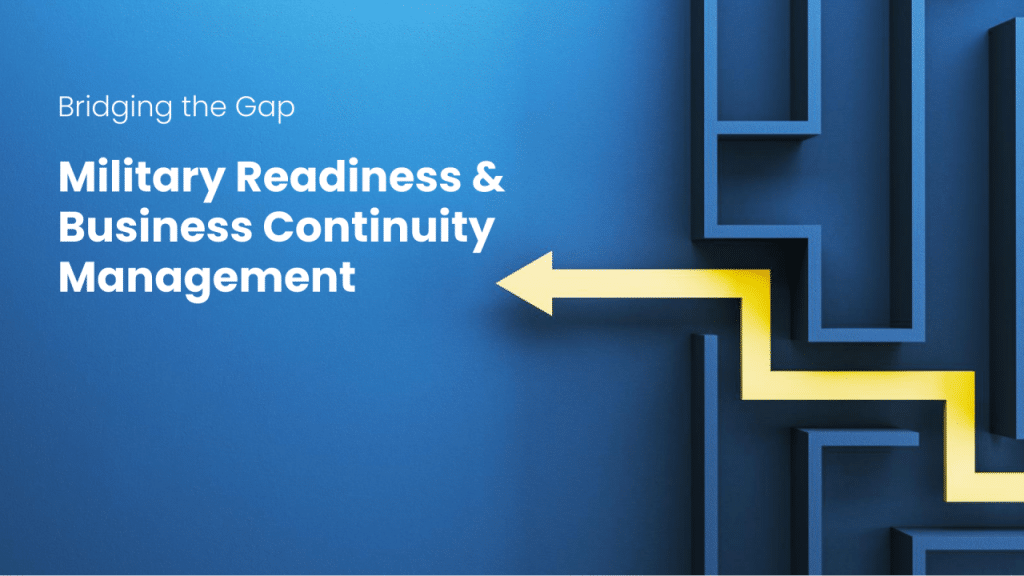Bridging the Gap: Military Readiness and Business Continuity Management

In today’s world, where geopolitical, business, and defense environments are experiencing uncertainty, the need for effective preparation and rapid recovery from disruptions has never been more critical. Whether it’s the ongoing war in Ukraine affecting global interest rates and commodity prices, or the crisis in the Red Sea impacting freedom of navigation and insurance costs, the interconnected nature of these threats necessitates a robust readiness strategy for both military and business organizations.
The rapid advancement of technology, such as Gen-AI, is reshaping how defense and military establishments prepare for and conduct warfare. Similarly, businesses must adapt to technological changes and unpredictable global events. The challenge lies in maintaining readiness for disruptions, thereby ensuring continuity of operations when a crisis unfolds.
This readiness is not just about prediction but also about adaptation and recovery, allowing organizations to continue functioning effectively.
Ensuring Continuity in Uncertain Times
The similarities between Military Readiness, including that enhanced by AI, and Business Continuity Management, are striking. Military organizations must be prepared to deploy forces swiftly, including to contested environments where freedom of action is compromised. They must ensure continuity of operations amidst logistical disruptions, casualties, and cyber-attacks. Similarly, commercial organizations must be ready to respond to fluctuating demand and supply influenced by both business and geopolitical factors. Ensuring business continuity and resilience means being prepared for disruptions in logistics, workforce instability, IT infrastructure or cyber-attacks.

Continuity through Data-Driven Insights
Not all crises can be fully mitigated, and the resilience and redundancy of resources have their limits. The key is to assess the potential impact on continuity—whether military or business—in advance. This requires dedicated analysis using advanced data and analytics technologies.
For businesses, this takes the form of Business Impact Analysis (BIA), while in the defense sector, it is embodied in the Readiness Decision Impact Model. By anticipating potential impacts, organizations can develop better readiness and resilience strategies.
Decision Intelligence: Roadmap to Resilience
At the heart of these strategies is the concept of Decision Intelligence (DI). DI integrates data, analytics, and decision-making processes to help organizations navigate complex environments and make informed decisions. This approach is increasingly relevant in addressing the challenges of military readiness and business continuity, providing a framework for making better decisions today that will lead to effective outcomes in the future.


